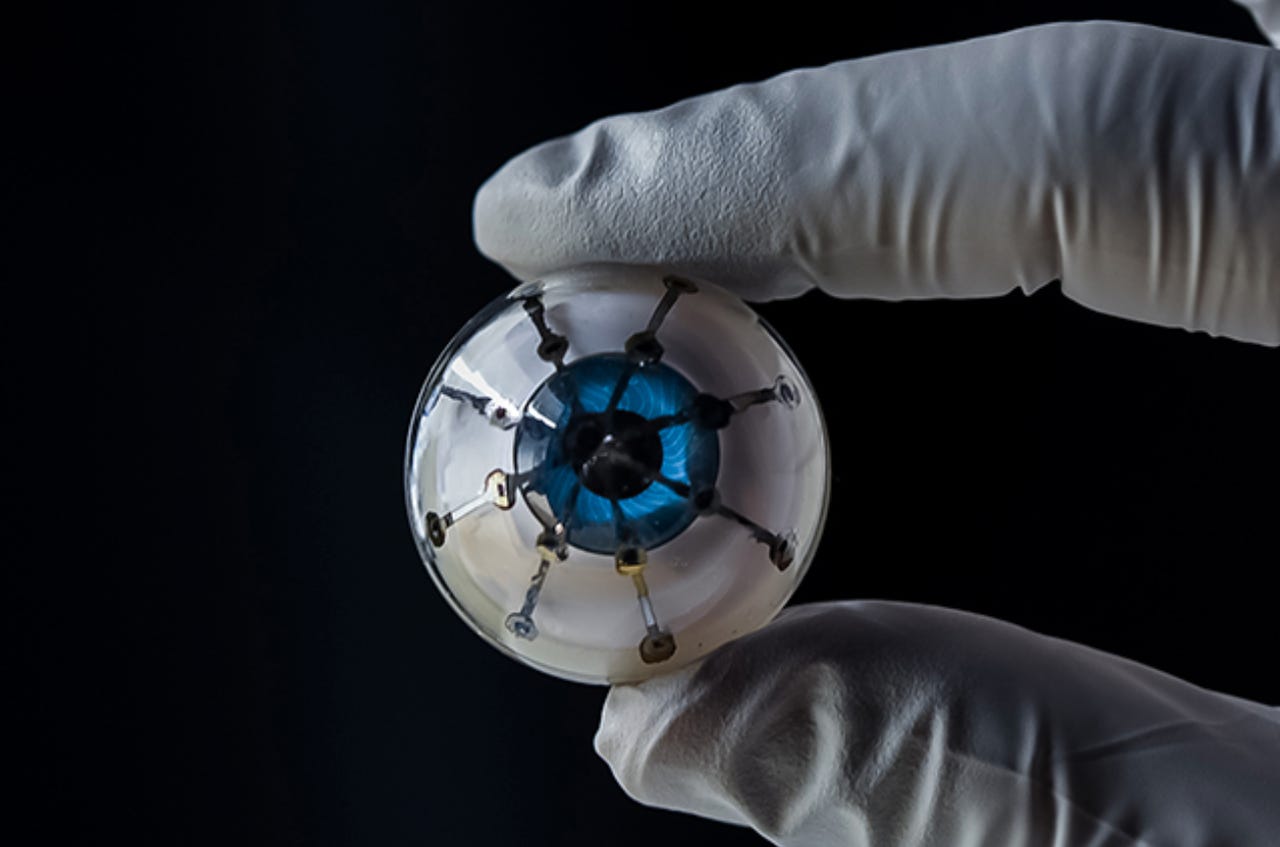3D printed bionic eye prototype could one day restore sight


Researchers have used 3D printing technologies to create light receptors on a hemispherical surface which could pave the way for future bionic eyes.
Featured
On Tuesday, academics from the US University of Minnesota said the invention is a "significant step" towards the creation of synthetic eyes which could either restore sight for the blind or improve levels of sight for the visually impaired.
3D printing on straight, flat surfaces is common, but attempting to print delicate components reliably on curved surfaces represents a challenge. The team began their journey with a hemispherical glass dome, which approximates the spherical surface of organic eyes.
CNET: Bionic hand with sense of touch can be worn outside the lab
Using a custom 3D printer designed for the task, the scientists were able to print a base ink of silver particles onto the dome. The silver ink dried in place, leading to the printing of an additional layer of materials through semiconducting polymers.
The semiconducting polymers were used to print photodiodes, which convert light into electricity, on top of the silver ink.
The process took roughly an hour to complete, and once dry, the sphere was tested for electricity conversion. According to Michael McAlpine, a co-author of the study and University of Minnesota Benjamin Mayhugh Associate Professor of Mechanical Engineering, the eye's energy generation was 25 percent efficient, which is considered a good result.
If a bionic eye is going to function, continuous power is required and solar energy is a renewable source.
The photodetectors can then provide the power for image-sensing arrays with "high sensitivity and a wide field of view," according to the team.
"Bionic eyes are usually thought of as science fiction, but now we are closer than ever using a multi-material 3D printer," said McAlpine.
TechRepublic: How MIT Media Lab is advancing human physicality, cognition, and emotional experience through bionic augmentation
The next step is the creation of a further prototype which is able to support more light receptors which have greater efficiency. In addition, the team has begun exploring soft materials in the hunt for something suitable, spherical, and able to be implanted into an organic eye.
The research has been published in the academic journal Advanced Materials.
See also: 3D-printed electronic tattoos could charge up battlefield warfare
This is not the first time 3D printing has been explored in the quest to restore sight for the visually impaired. Earlier this year, scientists from the UK's Newcastle University outlined the development of 3D printed corneas, made through a mixture of stem cells and collagen.